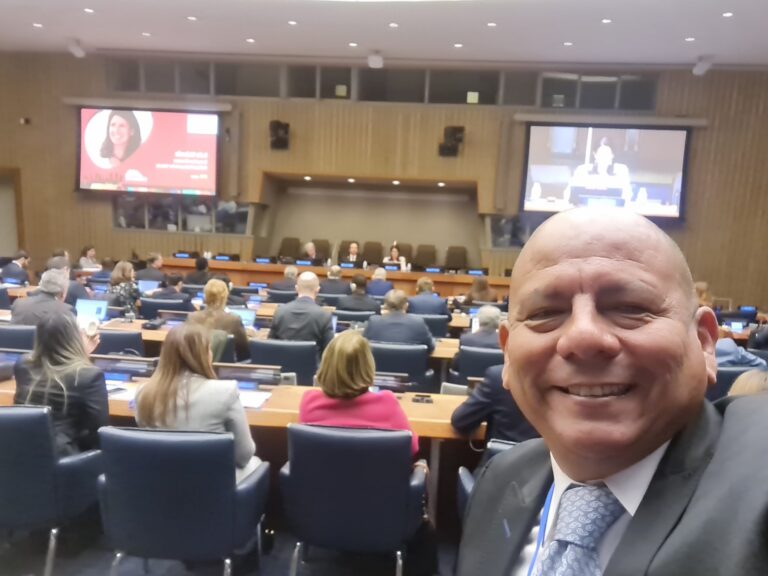In Peru, Women Lose the Right to Choose More Children
The Wall Street Journal
February 27, 1998
When a government team held a “ligation festival” to register women for sterilization in La Legua, Peru, Celia Durand resisted.
According to Mrs. Durand’s now-widowed husband, Jamie, the 31-year-old mother of three was appalled at the pressure tactics government health workers used to induce women to have tubal ligations. Not only did they go house-to-house to round up candidates, but they paid repeated visits to those who refused to comply. Mr. Durand says they reassured his wife that the operation was “simple and quick,” adding that she could “go dancing the same night.”
Even though Mrs. Durand knew that the local health station was equipped with little more than an examination table, pressure from government health workers finally wore her down. On July 4, 1997, she reluctantly underwent surgery. Two weeks later she died from complications.
Celia Durand was part of a massive sterilization campaign by the government of President Alberto Fujimori. It is a classic case of the conflicts of interest and potential for ethical violations inherent in a government sponsored “family planning” program. What was originally sold to Peruvians as an altruistic program aimed at helping poor Peruvian women has evolved into an orchestrated attempt to control reproduction and to meet a goal of fewer Indian children in the countryside.
In June 1995 Mr. Fujimori announced that his government would “disseminate thoroughly the methods of family planning to everyone” in order to make “the women of Peru . . . owners of their destiny.” What has happened since belies Mr. Fujimori’s feminist sentiments.
Until October 1995, even voluntary sterilization was illegal in Peru. With Mr. Fujimori’s backing, the Peruvian Congress legalized it. Soon the Ministry of Health, then headed by Eduardo Yong Motta, made sterilization its main method of “family planning.”
In a Jan. 29 interview with David Morrison of the Population Research Institute, Dr. Yong Motta, now President Fujimori’s health adviser defended the practice of sterilizing women even if they had previously been using other contraceptives such as the injectable Depo-Provera. “Depo costs too much,” Dr. Yong Motta said. “In addition, . . . a women might forget to come in for her shot or might not want to.” (emphasis added)
By spring l996 the Ministry of Health had set national targets for sterilizations, and health workers were being given individual quotas. The ministry has been aggressively targeting poor women in rural areas-which in practice means those of Indian or mixed descent-for sterilization. The medical director of the Huancavelica region, for instance, ordered in a written communique that “named personnel have to get 2 persons for voluntary surgical sterilization per month.” According to this directive, “At the end of the year there will be rewards for the site that has . . . the greatest effort to bring in people.”
To meet these targets, mobile sterilization teams travel throughout the countryside, holding “ligation festivals” and practicing the kind of coercion that Celia Durand experienced. In many areas health workers receive a bonus for each additional procedure, while they can lose their jobs if they fail to meet their quotas. As the Huancavelica directive notes, “At the end of the year each person will be evaluated by the numbers of patients captured.”
Dr. Yong Motta openly defends quotas. “Of course the campaign has targets…. [Success is measured] through many methods, including numbers of acceptors versus nonacceptors.” He admits the dangers of setting targets, but insists that “the campaign has been a success.”
That Peruvian medical workers under heavy pressure to meet sterilization quotas should resort to coercion is hardly surprising. Knowing full well this danger, the 1994 Cairo Population Conference condemned the use of quotas or targets in birth control campaigns, an admonition Dr. Yong Motta and other Peruvian officials have now admitted ignoring.
Coercion takes various forms. First, there are repeated visits to the homes of holdouts. As one woman in La Quinta remarked, the workers came “day and night, day and night, day and night to urge me to undergo the operation.”
Various bribes and threats are also employed. According to interviews in villages and press accounts in El Commercio, hungry women are offered the opportunity to participate in food programs, including programs supported by the U.S., if they agree to sterilization. Women already participating in food programs have been threatened with expulsion.
Rural women report that no mention is made of sterilization’s health risks. Nor are they given the opportunity to choose alternative methods of family planning; indeed, women using contraceptives have been refused additional supplies. There have even been sterilizations performed on women without their consent, often during the course of other medical procedures. Victoria Espinoza of Piura has testified before a U.S. congressional committee that doctors at a government hospital told her she was sterilized-without warning or permission-during a Caesarean delivery. Her baby later died.
Dr. Yong Motta attempts to defend the pressure tactics. “If the Ministry of Health did not do the campaign house-to-house, people would not come,” he asserts. As far as the repeat visits are concerned, “It was a doctor’s responsibility to convince the patient into doing what was best and [having a tubal ligation]. Women in Peru have many children.”
The U.S. has some responsibility for all this. It has been pushing population control in Peru for three decades. As congressional staffer Joseph Rees remarks, “We have enriched, encouraged, and thus emboldened the Ministry of Health to take decisive action where population growth was concerned.”
Dr. Yong Motta is more blunt, saying that the U.S. Agency for International Development “is disqualified from objecting [to the sterilization campaign] because they have been helping in the family planning program from the first.”
To understand how oppressive and intrusive Peru’s family-planning program is, imagine how you’d feel if someone from the Department of Health and Human Service showed up on your doorstep bearing contraceptives-let alone an order to report for sterilization. Not all government-sponsored family planning programs are this coercive. But there is an element of intrusiveness common to them all. Instead of making poor Women in Peru “owners of their destiny, Ml. Fujimori’s birth control campaign paternalistically decides their reproductive destiny for all time.
Mr. Mosher is president of the Population Research Institute










